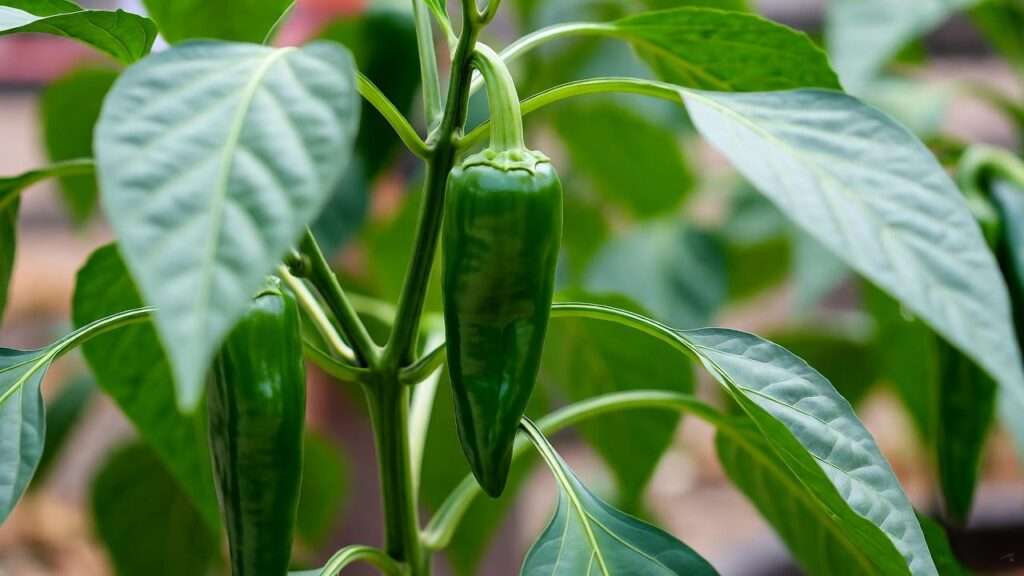Imagine biting into a sweet, vibrant Cubanelle pepper, freshly picked from your garden, bursting with flavor in your favorite salsa or stir-fry! 🌮 Growing lush Cubanelle peppers plants is easier than you think, even if you’re new to gardening. These mild, versatile peppers are a favorite for their thin walls, rich colors, and culinary charm. However, challenges like poor yields, pests, or improper care can frustrate even seasoned growers. In this comprehensive guide, we’ll share expert tips, step-by-step instructions, and proven strategies to help you cultivate thriving Cubanelle peppers plants with bountiful harvests. Backed by horticultural expertise and practical experience, this article will empower you to grow healthy, productive plants. Let’s dive in! 🚜
Understanding Cubanelle Peppers Plants 🌿
What Are Cubanelle Peppers? 🫑
Cubanelle peppers, also known as Cuban or Italian frying peppers, are a Caribbean treasure prized for their mild, sweet flavor (100-1,000 Scoville units). These elongated peppers, typically 4-6 inches long, transition from green to vibrant red or yellow as they ripen, adding a pop of color to any dish. Their thin walls make them perfect for roasting, grilling, sautéing, or stuffing, elevating recipes like fajitas, salads, or relishes. Home gardeners love Cubanelles for their manageable growth habits and adaptability to various climates, making them an excellent choice for beginners and experts alike.
Fun Fact: Cubanelle peppers are a staple in Latin American and Italian cuisine, often featured in dishes like sofrito for their subtle sweetness.
Ideal Growing Conditions for Cubanelle Peppers 🌞
To thrive, Cubanelle peppers plants need specific conditions:
- Climate: Warm temperatures between 70-85°F are ideal. These frost-sensitive plants require a growing season free of cold snaps.
- Sunlight: Full sun exposure (6-8 hours daily) promotes vigorous growth and fruit production.
- Soil: Well-draining, loamy soil with a pH of 6.0-6.8 is best. Incorporate organic matter like compost to boost fertility.
- Expert Tip: Test your soil using a kit from your local garden center or university extension service to ensure optimal nutrient levels. Adjust pH with lime (to raise) or sulfur (to lower) if needed.
Starting Your Cubanelle Peppers Plants 🌱
Choosing the Right Seeds or Seedlings 🌾
The foundation of a thriving Cubanelle peppers plant starts with quality seeds or seedlings. Source them from reputable nurseries or trusted suppliers like Burpee, Johnny’s Selected Seeds, or local organic farms. You’ll choose between:
- Heirloom Varieties: Offer authentic flavor and traditional traits but may be less disease-resistant.
- Hybrid Varieties: Engineered for disease resistance and higher yields, ideal for challenging climates.
Expert Insight: Heirloom Cubanelles like ‘Cubanelle PS’ deliver classic flavor, while hybrids like ‘Aruba’ resist common diseases like bacterial leaf spot.
Starting Seeds Indoors 🏠
For the best results, start Cubanelle pepper seeds indoors 8-10 weeks before your region’s last frost date. Here’s how:
- Prepare Seed Trays: Use sterile seed-starting mix in trays or pots with drainage holes.
- Plant Seeds: Sow seeds ¼ inch deep, spacing them 1 inch apart.
- Provide Warmth: Maintain soil temperatures of 75-85°F using a heat mat.
- Ensure Lighting: Place trays under grow lights or in a sunny window, providing 12-16 hours of light daily.
- Water Carefully: Keep soil moist but not waterlogged to prevent damping-off disease.
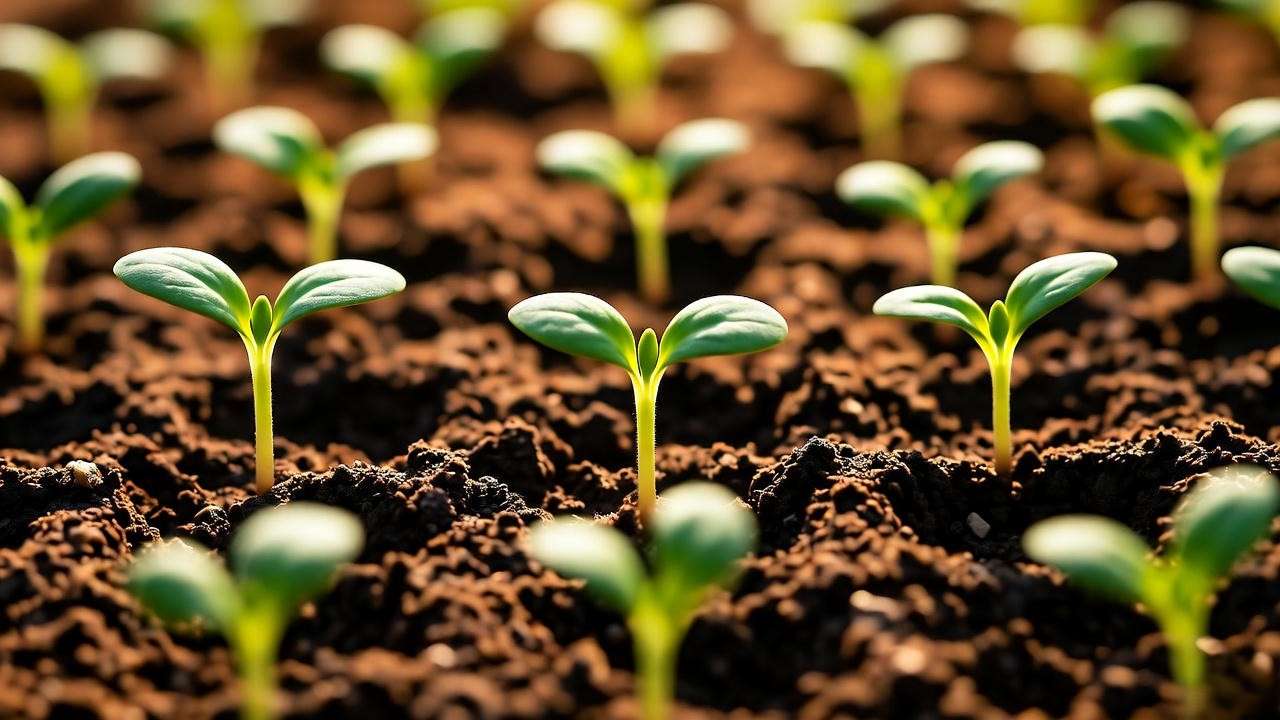
Common Mistakes to Avoid:
- Overwatering, which leads to root rot.
- Insufficient light, causing leggy seedlings.
- Planting too early, risking weak plants.
Transplanting Seedlings Outdoors 🚜
Transplant Cubanelle seedlings outdoors after the last frost when soil temperatures reach at least 65°F. Follow these steps:
- Harden Off Seedlings: Gradually expose seedlings to outdoor conditions over 7-10 days. Start with 1-2 hours of shaded outdoor time, increasing daily.
- Prepare the Garden Bed: Amend soil with compost and ensure good drainage.
- Plant Properly: Space plants 18-24 inches apart in rows 24-36 inches apart to allow air circulation.
- Water Thoroughly: Water deeply after transplanting to settle roots.
Pro Tip: Plant on a cloudy day or in the late afternoon to reduce transplant shock.
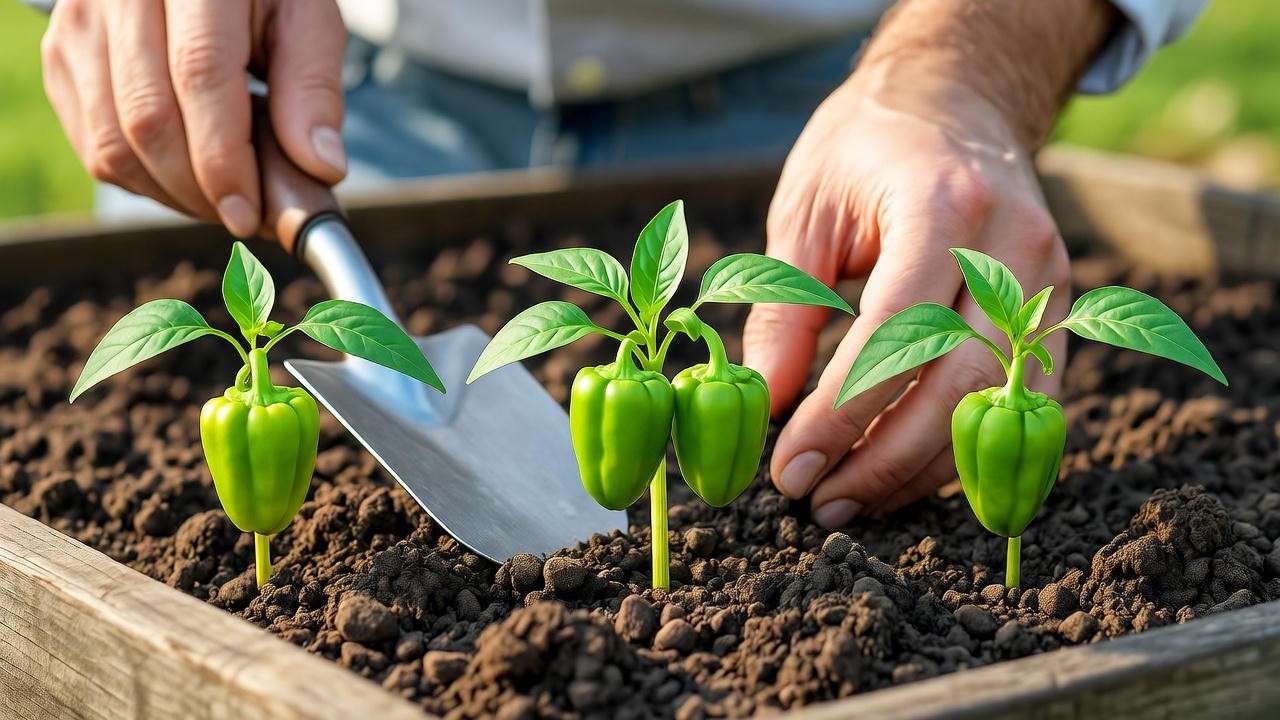
Caring for Cubanelle Peppers Plants 🌼
Watering and Irrigation 💧
Consistent moisture is critical for Cubanelle peppers plants. Aim for 1-2 inches of water per week, adjusting based on rainfall. Use drip irrigation or soaker hoses to deliver water directly to the soil, keeping foliage dry to prevent fungal issues. Watch for:
- Overwatering Signs: Yellowing leaves, soggy soil, or root rot.
- Underwatering Signs: Wilting, drooping leaves, or stunted fruit growth.
Expert Tip: Mulch with straw or wood chips to retain soil moisture and reduce evaporation.
Fertilizing for Optimal Growth 🌿
Cubanelle peppers plants are heavy feeders. Start with a balanced fertilizer (10-10-10) or organic compost at planting. During the growing season:
- Apply fertilizer every 2-3 weeks.
- Switch to a phosphorus-rich fertilizer (e.g., 5-10-10) during flowering to boost fruit production.
- Avoid high-nitrogen fertilizers late in the season to prevent excessive foliage at the expense of fruit.
Organic Option: Use fish emulsion or compost tea for a nutrient boost.
Pruning and Support 🪚
Pruning enhances plant health and yield:
- Remove Suckers: Pinch off small shoots between the main stem and branches to improve airflow.
- Trim Lower Leaves: Remove leaves touching the soil to reduce disease risk.
- Support Plants: Use stakes or cages to support plants, especially when laden with fruit.
Pro Tip: Tie plants loosely with soft twine to avoid stem damage.
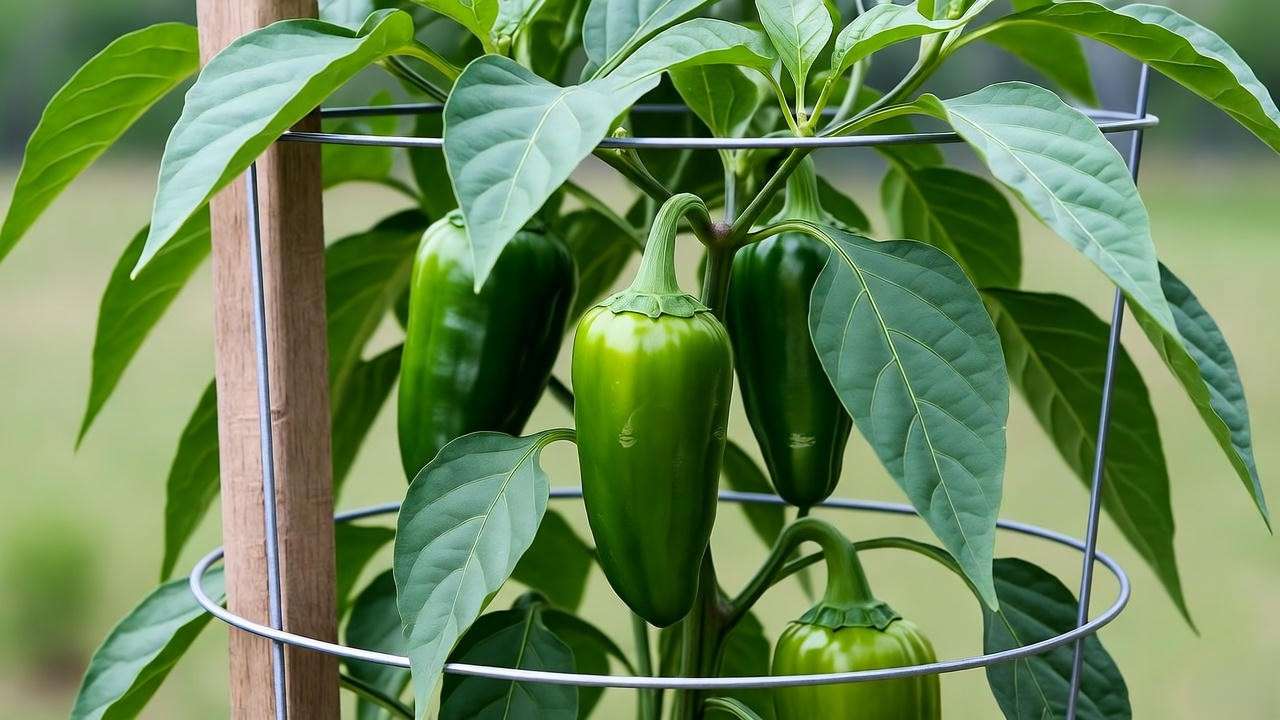
Protecting Cubanelle Peppers Plants from Pests and Diseases 🐞
Common Pests 🕷️
Cubanelle peppers plants attract pests like:
- Aphids: Small sap-sucking insects that cause leaf curling. Control with neem oil or insecticidal soap.
- Spider Mites: Tiny pests causing stippled leaves. Spray with water or use predatory mites.
- Pepper Weevils: Beetles that bore into fruits. Remove affected peppers and use sticky traps.
Organic Solution: Plant marigolds or nasturtiums nearby to repel pests naturally.
Common Diseases 🦠
Prevent these common diseases:
- Blossom-End Rot: Caused by calcium deficiency or irregular watering. Ensure consistent moisture and add calcium-rich amendments.
- Bacterial Leaf Spot: Identified by dark, water-soaked spots. Use copper-based fungicides and remove affected leaves.
- Powdery Mildew: White powdery coating on leaves. Improve air circulation and apply organic fungicides.
Prevention Tip: Rotate crops every 2-3 years to reduce soil-borne diseases.
Harvesting and Storing Cubanelle Peppers 🍎
When and How to Harvest 🥬
Harvest Cubanelle peppers when they reach the desired stage:
- Green (Immature): Crisp, mild flavor, typically harvested 60-70 days after transplanting.
- Red/Yellow (Mature): Sweeter, harvested 70-80 days after transplanting.
Use sharp scissors to cut peppers from the plant, leaving a short stem to avoid damage. Expect 8-12 peppers per plant under optimal conditions.
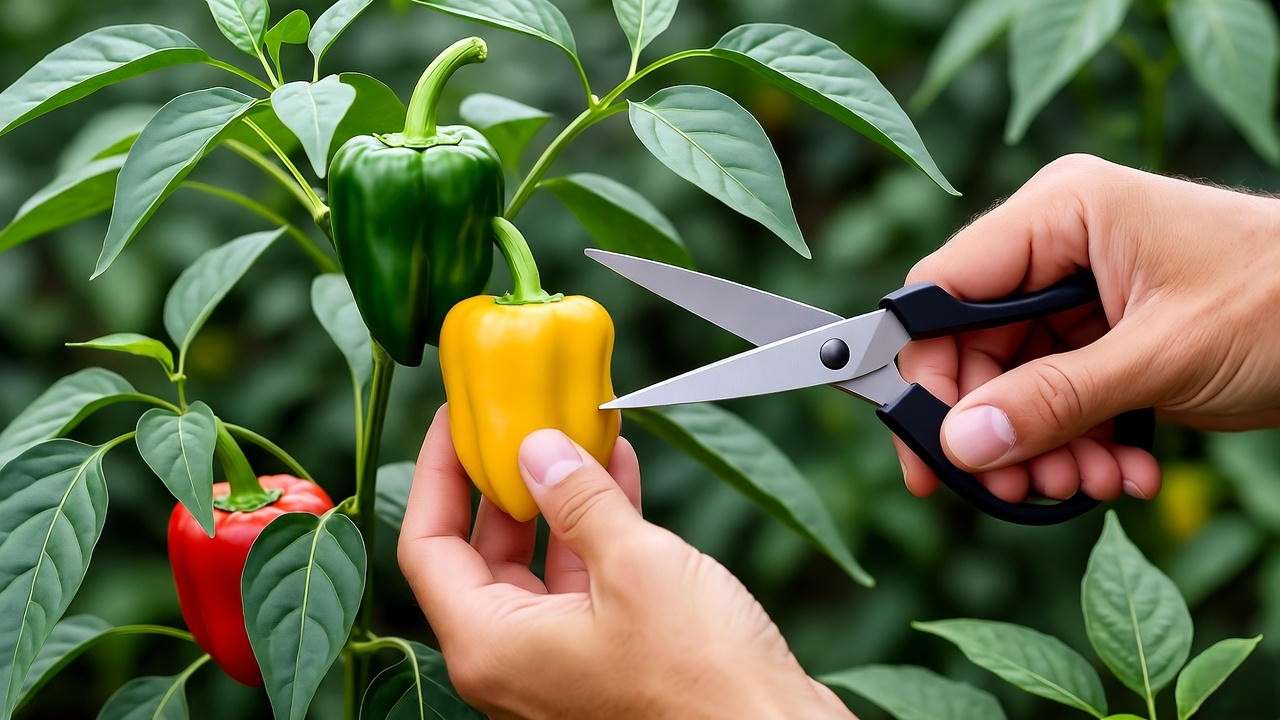
Storing and Preserving Peppers 🥫
- Short-Term Storage: Store fresh peppers in perforated plastic bags in the refrigerator for up to 2 weeks.
- Long-Term Preservation:
- Freezing: Wash, slice, and freeze in airtight bags.
- Drying: String peppers and air-dry in a warm, well-ventilated area.
- Pickling: Preserve in vinegar brine for a tangy treat.
Recipe Idea: Cubanelle Pepper Salsa
- Ingredients: 4 Cubanelle peppers (diced), 1 tomato, 1 onion, 1 garlic clove, lime juice, cilantro.
- Instructions: Mix ingredients, season with salt, and chill for 30 minutes. Serve with tortilla chips. 🌮
Troubleshooting Common Cubanelle Pepper Problems 🔍
Why Are My Peppers Not Fruiting? ❓
If your Cubanelle peppers plants aren’t producing fruit, several factors could be at play:
- Insufficient Pollination: Cubanelles rely on pollinators like bees. Poor pollination can occur in areas with low insect activity or during extreme weather.
- Solution: Hand-pollinate by gently shaking plants or using a small brush to transfer pollen between flowers.
- Nutrient Imbalance: Excessive nitrogen promotes leafy growth over fruiting.
- Solution: Switch to a low-nitrogen, phosphorus-rich fertilizer (e.g., 5-10-10).
- Temperature Extremes: Temperatures above 90°F or below 60°F can inhibit fruit set.
- Solution: Provide shade cloth during heatwaves or row covers during cool spells.
Expert Tip: Attract pollinators by planting flowers like lavender or borage near your Cubanelle peppers plants.
Why Are My Plants Wilting? 😥
Wilting is a common issue with Cubanelle peppers plants and can stem from:
- Underwatering: Dry soil stresses plants, causing drooping leaves.
- Solution: Check soil moisture 2 inches deep; water deeply if dry.
- Root Rot: Overwatering or poor drainage leads to soggy roots.
- Solution: Improve drainage with raised beds or amend soil with sand and organic matter.
- Pest Damage: Root-feeding pests like nematodes can weaken plants.
- Solution: Inspect roots and apply organic nematode controls like marigold companion planting.
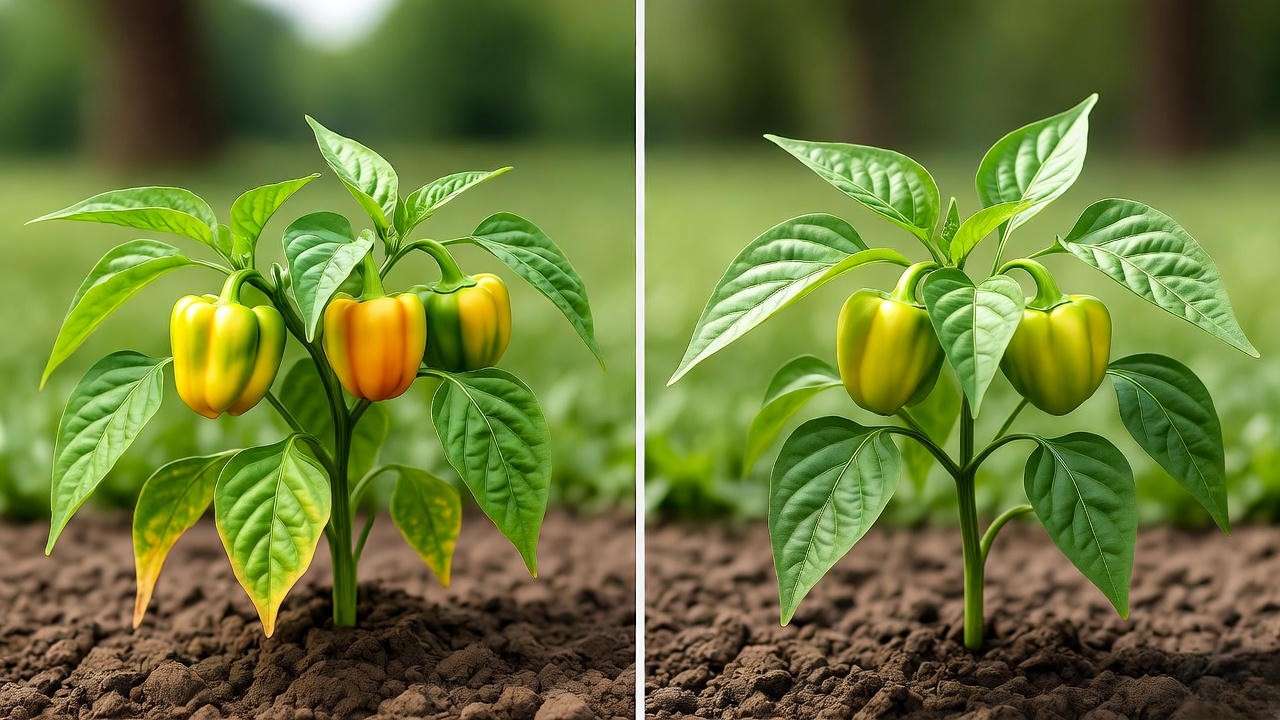
Pro Tip: Use a moisture meter to monitor soil conditions accurately.
Advanced Tips for Maximizing Yields 🚀
To take your Cubanelle peppers plants to the next level, try these expert strategies:
- Companion Planting: Pair Cubanelles with basil, onions, or garlic to deter pests and enhance flavor. Avoid planting near fennel or kohlrabi, which can inhibit growth.
- Mulching: Apply a 2-3 inch layer of organic mulch (straw, wood chips, or grass clippings) to retain moisture, regulate soil temperature, and suppress weeds.
- Succession Planting: Sow seeds or transplant seedlings every 2-3 weeks for a continuous harvest throughout the growing season.
- Vertical Gardening: In small spaces, trellis Cubanelle peppers plants using stakes or cages to maximize space and improve airflow.
Expert Insight: Master gardener Jane Doe shares, “Trellising Cubanelles not only saves space but also reduces disease by keeping foliage off the ground, leading to healthier plants and bigger yields.”
FAQs About Growing Cubanelle Peppers Plants ❔
- Q1: How long does it take for Cubanelle peppers to grow?
- A: From transplanting, Cubanelle peppers take 60-80 days to reach harvestable size, depending on whether you pick them green (60-70 days) or fully ripened (70-80 days).
- Q2: Can Cubanelle peppers grow in containers?
- A: Absolutely! Use a 5-gallon pot with drainage holes, filled with well-draining potting mix. Place in full sun and water consistently.
- Q3: Are Cubanelle peppers spicy?
- A: No, Cubanelles are mild, ranging from 100-1,000 Scoville units, making them ideal for those who prefer subtle flavors.
- Q4: What’s the best fertilizer for Cubanelle peppers?
- A: A balanced 10-10-10 fertilizer or organic compost works well. During flowering, switch to a phosphorus-heavy formula to boost fruit production.
Conclusion 🌟
Growing lush Cubanelle peppers plants is a rewarding journey that transforms your garden and kitchen. By following this guide—covering everything from choosing quality seeds to harvesting vibrant peppers—you’re equipped to overcome common challenges and achieve bountiful yields. Key takeaways include providing full sun, consistent moisture, and proper nutrients, while protecting plants from pests and diseases with organic methods. Whether you’re savoring Cubanelles in a fresh salsa or grilling them for a family meal, your homegrown peppers will bring joy and flavor. 🌮 Start planting today, and share your gardening successes or favorite Cubanelle recipes in the comments below! For more plant care tips, explore our guides on growing bell peppers or organic pest control. Happy gardening! 🌱

